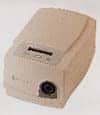RT interviews Tom Lacy, vice president, Neurology/Sleep Division, Bio-logic Systems Corp.

Q: How do rapid technology advancements affect sleep specialists both positively and negatively?
A: The rapid advances in technology we have seen over the past few years have been very positive for sleep medicine. Although it takes good planning to keep a laboratory on the cutting edge of new technology, the benefits in productivity and better patient care far outweigh the costs and effort.
Q: As computers quickly get replaced with newer systems, how can respiratory specialists fight computer obsolescence?
A: It is important to plan for computer and software upgrades at the time of the initial equipment purchase. Often, investing a little more up front will save a great deal in the long run and allow the laboratory to remain current over a long period of time. For example, one of Bio-logic’s maintenance agreement options includes planned annual software upgrades, along with a complete computer, software, and operating system upgrade after 36 months. When considering new equipment, the laboratory should have a clear understanding of the upgrade path available as well as the associated costs.
Q: When Bio-Logic provides a whole new computer, what happens to the information stored on the old computer? Can it be transferred?
A: Existing files can be readily moved to the new computer and, in almost all cases, they are compatible with the new software. Also, provisions have been made for transferring system settings, default values, and montages to minimize the setup time for the new computer. Often, it is as easy as unplugging the amplifier, monitor, mouse, and keyboard from the existing computer and plugging them into a new one with the latest features, operating system, and software.
Q: What other technology advancements can respiratory specialists look for soon?
A: We should expect continued advancements in both software and hardware. New software tools such as XML technology, for example, will result in faster and more intuitive user interfaces. Some of the newer amplifier designs are self-contained systems that don’t require specialized boards or other components in the computer. This not only makes it easier to upgrade the computer, but also reduces the time required to incorporate new computer industry technology as it is developed. Bio-logic’s amplifier system employs an Ethernet connection to communicate with the computer. An obvious next step is wireless Ethernet, which will provide significant advantages in patient management, flexibility, and work flow.








